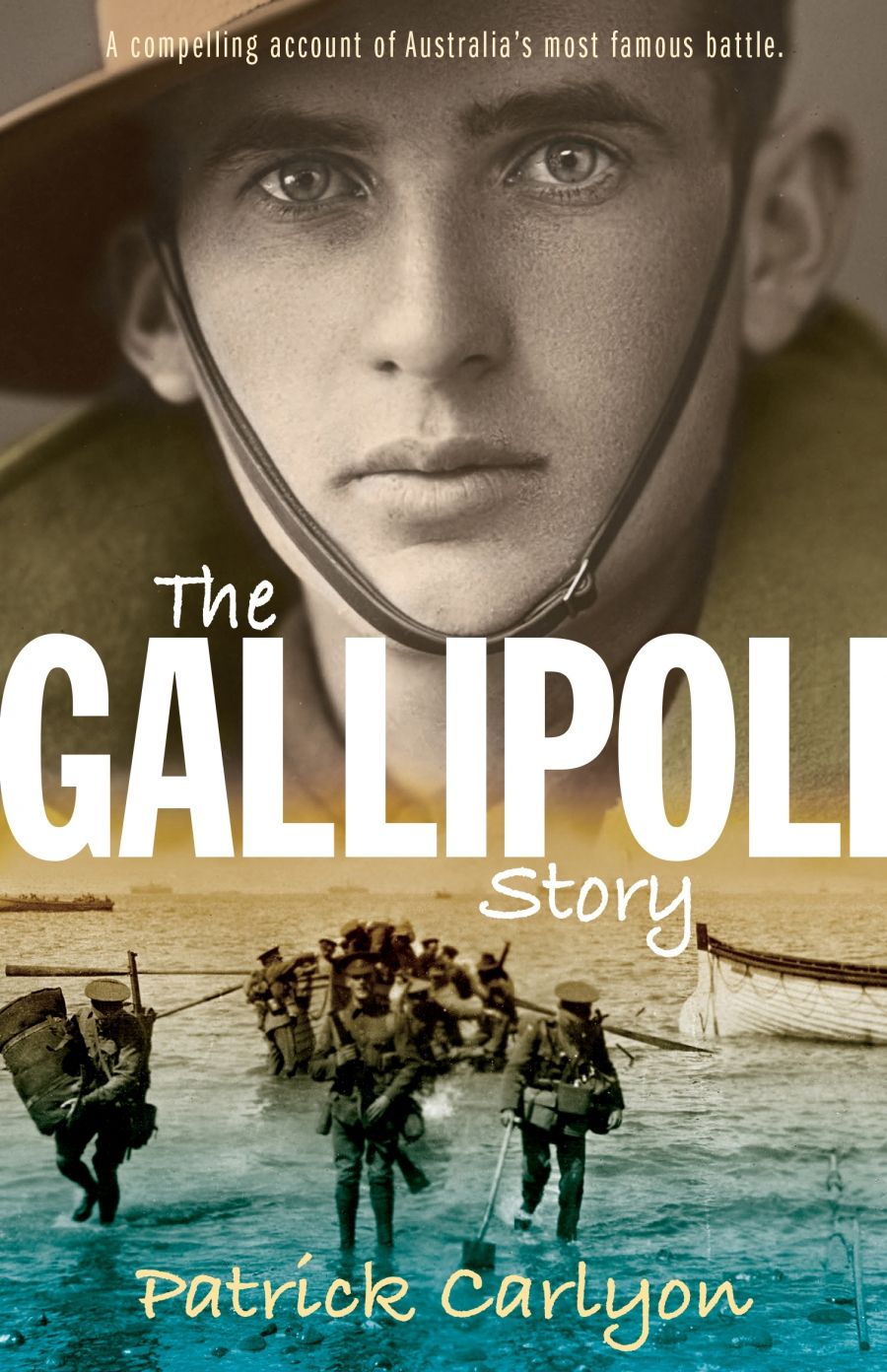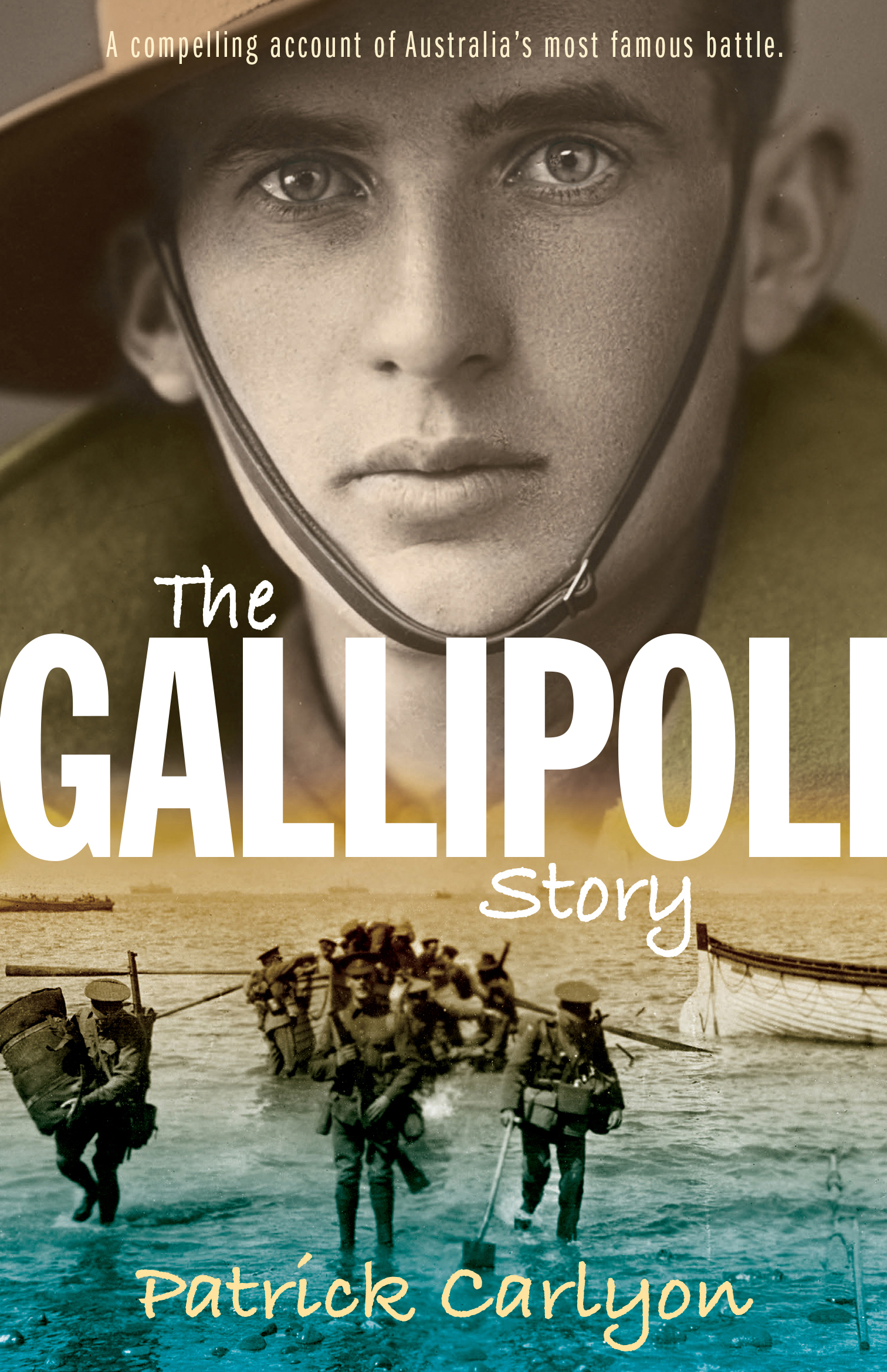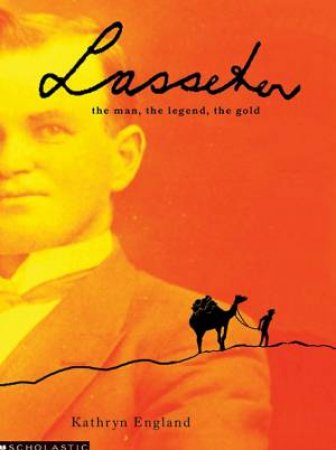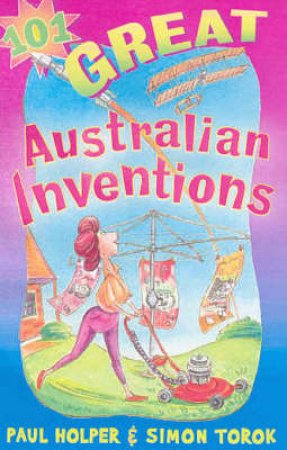
- Free Article: No
- Contents Category: Children's Non-Fiction
- Custom Article Title: Dianne Schallmeiner reviews Seven Young Adult Non-Fiction Books
- Review Article: Yes
- Article Title: Weaving Facts
- Online Only: No
- Custom Highlight Text:
On 25 April 1984, 300 people attended the dawn service at Gallipoli. In 2000 there were 15,000, many of them young Australians. In recognition of his renewed interest, Patrick Carlyon (who was at the 2000 service) has written The Gallipoli Story. Looking beyond the well-known Anzac heroes and stories, Carlyon takes us into the trenches and introduces us to individuals: young men with names and hometowns, with sisters and girlfriends; young men who are afraid and confused. The shocking waste of life, as soldiers from both sides charge to their deaths, can make for uncomfortable reading, but Carlyon has refrained from gratuitous violence. It is one thing to have hundreds of dry facts and statistics at hand, quite another to weave these facts into an engaging story. Carlyon has managed it superbly.
- Book 1 Title: The Gallipoli Story
- Book 1 Biblio: Penguin, $16.95pb, 204pp
- Book 1 Cover Small (400 x 600):

- Book 1 Cover (800 x 1200):

- Book 2 Title: Lasseter, the Man, the Legend, the Gold
- Book 2 Biblio: Scholastic, $18.95pb, 44pp
- Book 2 Cover Small (400 x 600):

- Book 2 Cover (800 x 1200):

- Book 3 Title: 101 Great Australian Inventions
- Book 3 Biblio: ABC Books, $12.95pb, 96pp
- Book 3 Cover Small (400 x 600):

- Book 3 Cover (800 x 1200):

Another Australian legend, that of Lasseter’s Reef, continues to intrigue nearly seventy years after Harold Lasseter’s death. In 1897, so the story goes, seventeen-year-old Lasseter stumbled across a gold reef in the Central Australian desert. Thirty years later, during the Great Depression, Lasseter decided to share his ‘secret’ with others. So convincing was his story that investors set up a company to raise money to send an expedition into the desert to stake a claim on the reef. Lasseter perished on the trip. Mark Greenwood’s The Legend of Lasseter’s Reef is a beautifully illustrated story, presenting a wealth of information in an easy-to-read format. For those readers wanting more detail, Kathryn England’s Lasseter, the Man, the Legend, the Gold fleshes the story out. By presenting facts in Lasseter’s defence, as well as evidence against him, England allows the reader to draw their own conclusion. Both authors have exhaustively researched their subject, and have made wonderful use of maps, letters and photographs.
101 Great Australian Inventions is another well-researched book. Authors Paul Holper and Simon Torok start at the beginning, with ingenious Aboriginal inventions dating back thousands of years. The boomerang, bush medicine and the woomera are amongst those listed. The authors then move to the twenty-first century, with a list of some of the most important (and obscure) Australian inventions. Refrigeration, the Chiko Roll, the wine cask and polymer banknotes all rate a mention.
Gisela Kaplan, with a combination of delightful photographs and informative text, has produced a fine book in Famous Australian Birds. While detailed chapters provide just enough information, without getting too bogged down with facts, what sets this apart from other generic ‘bird’ books are the stories of Kaplan’s real-life rescues. The ‘before’ pictures of tiny, orphaned birds, with Kaplan’s retelling of how she came to care for them, and ‘after’ photos of healthy, strong birds add another dimension to the book. Kaplan runs a bird rescue centre, and her knowledge and compassion for our feathered friends shines through.
Zoo Album, too, is all the richer for real-life stories shared by keepers from the Taronga and Western Plain zoos in New South Wales. Richard Morecroft and Alison Mackay introduce us to just a few of the mammals, birds, reptiles and amphibians living in the zoos. By concentrating on only a handful of animals, they give us an intimate look at each animal – a ‘family album’. This works well, as each animal is brought to life with notes on how it came to be at the zoo, its dietary requirements, interesting facts, along with quirky stories about the animal: ‘Like most snakes, Ana’s rather ticklish. If she’s sliding over an unfamiliar surface, you can see the scales on her tummy shudder a little.’ Karen Lloyd-Diviny’s illustrations capture the essence of each animal and add to the ‘snapshot’ feel of Zoo Album.
Louise Southerden’s Surf’s Up: The Girl’s Guide to Surfing is described in a media release as ‘the first ever surfing bible for girls’. There is little about learning to surf that Southerden hasn’t covered. Beginning with a detailed history of women’s surfing, Southerden covers all bases: where to begin, what you’ll need, where to surf, the rules, the lingo. But these aren’t just skimmed over – readers are given the nitty-gritty details (including how to get over a fear of sharks and what to wear in the surf). Surf’s Up is well designed, allowing for a slow, detailed read, or a quick flick through to the ‘exciting’ bits for those ready to hit the surf. Southerden has produced an inspiring book, not only for young girls but for any woman with an itch to ‘hang ten’.


Comments powered by CComment